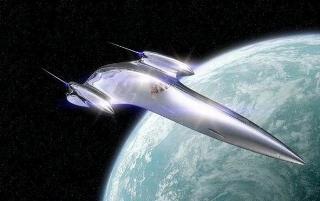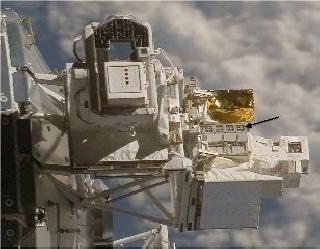
LONDON (PTI): Researchers have found that Star Wars-style deflector shields that protect spaceships from laser fire are scientifically feasible.
Researchers at the University of Leicester found that shields, such as those seen protecting spaceships in the Star Wars film series, would not only be scientifically feasible - but that the science behind the principle is already used on Earth.
In the Star Wars movies, spaceships are protected by a shield defence system that deflects enemy laser fire.
In order to recreate this type of shield, the researchers assumed that a surrounding field of super-hot plasma would be used, held in place by a magnetic field around the ship. The denser the plasma, the higher the frequency of electromagnetic wave (or laser radiation) will be deflected.
The principle can already be seen, not in a galaxy far, far away, but in the atmosphere around our own planet, researchers said.
It is seen in 'over-the-horizon' radio communications, used for decades in early warning RADAR systems and for long distance communications where satellite communications are not feasible.
"The Earth's atmosphere is made up of several distinct layers, one of which is the ionosphere. The ionosphere is a plasma, and extends from roughly 50km above the surface of the Earth to the edge of space," said student researcher Alexander Toohie.
"Just like the plasma described in our paper, it reflects certain frequencies of electromagnetic radiation, in this case radio frequencies. Radio communications and RADAR can be beamed upwards toward the sky where it will be reflected back down toward the Earth.
"This method can be used to send communications over the horizon where radio transmissions would not normally be capable of reaching, much like using a mirror to look around a corner," Toohie said.
A strong magnetic field would be needed to create the required pressure to contain the plasma. The researchers calculated that the magnet strength required was definitely feasible, but would need a large power source that would restrict space in your ship.
Another major restriction would be that a shield designed to deflect light radiation would prevent any light reaching the pilot, leaving them effectively blind.
The students suggest that an Ultra-Violet camera would be a more readily available alternative, as UV radiation is beyond the frequency of light radiation.
While the technology might not be ready to protect your starfighter, there are more down-to-earth applications that we could see in the future, researchers said.
"Another possible application of this principle may be for trapping radiation inside a shell of plasma rather than excluding it," Toohie said.
"This may be useful for applications that require incredibly high temperature environments, such as experimental fusion reactors," he said.
 Next Article
Next Article













The Indian Air Force, in its flight trials evaluation report submitted before the Defence Ministry l..
view articleAn insight into the Medium Multi-Role Combat Aircraft competition...
view articleSky enthusiasts can now spot the International Space Station (ISS) commanded by Indian-American astr..
view article